The 1985 Oscar-winning Merchant Ivory production of A Room with a View is one of the best loved British films of the past few decades.
It takes a brave person to pen a new version of EM Forster’s novel for ITV1. Step forward Andrew Davies, who is no stranger to controversy. “If there are complaints, I’m braced to meet them,” he says.
The award-winning screenwriter describes A Room with a View as “delightful, funny and romantic”. In Forster’s novel, the naive Lucy Honeychurch is looking for love and torn between stifling Edwardian propriety in the form of Cecil Vyse and modernity represented by George Emerson.
But A Room with a View is not all froth. “In this version, we’ve brought out the class thing,” says Davies. “Everybody surrounding Lucy feels that George may be a nice young man but it’s absolutely impossible. He’s from the wrong background.”
On returning to Forster’s novel after many years, Davies was surprised by the number of “queer references”. The vicar, Mr Beebe, he says, “is quite clearly gay and it was fun bringing that out a bit more”.
In one memorable passage, George and Lucy’s brother, Freddy, go skinny-dipping. “Mr Beebe gets in a terrible flap and starts talking very fast about the wonderful foliage. You realise that he’s absolutely fascinated by the young men’s bodies.”
Davies has adapted many classics, including the BBC’s Pride and Prejudice and Bleak House, and his method is unvarying: “I try to write sentences that could have been spoken then but that also sound right now. I hate costume dramas if they’re cute and quaint, all that kind of bollocks.”
He adds: “Without spoiling the period feel, we wanted A Room with a View to feel modern in terms of the relationships and emotions. If it doesn’t speak directly to an audience today there’s not really much point in doing it.”
Producer Eileen Quinn, head of drama at IWC Media, sent Davies’ one-page summary of A Room with a View to the BBC and ITV. The latter’s director of drama Nick Elliott responded in a couple of days. “To this day I’ve never heard back from the BBC,” says Quinn.
The drama was shot in just four weeks in early summer in Florence, Surrey and London. Father and son Timothy and Rafe Spall play Mr Emerson and his boy George. Elaine Cassidy is Lucy and Laurence Fox plays Cecil. The budget was large by TV standards at about £2m, but so were the costs, especially filming in Italy.
The crew shot day and night, trying to keep one step ahead of the tourists who fill Florence - and the many fans of the Merchant Ivory film. “On our last day in Florence,” recalls director Nicolas Renton, “I was standing in the Piazza Santa Croce surrounded by hundreds of tourists. It was very hot and humid, and most of us had been up all night. A middle-aged man asked me what we were doing. I said A Room with a View and he replied, ‘How dare you,’ meaning the original film was clearly the ticket. My right arm went half way to clench mode and Eileen stepped in smartly and took him away.”
The Italian shoot, however, was mostly a joy. “In the hills outside Florence, we were fortunate enough to be filming early in the day and were able to use the low light in this wonderful countryside,” recalls director of photography Alan Almond. “The long grass is golden in Italy and the air is dusty and hot, which gives a great texture to the whole picture.”
The second half of the novel is set in Surrey, a part of England that’s changed hugely in the 100 years since Forster wrote the novel. “It’s very difficult finding a village that hasn’t been corrupted by a main road,” says location manager Robin Pim.
Armed with an Ordnance Survey map, Pim came across the village of Holmbury St Mary to film the scenes at the Emersons’ cottage. He then unearthed a house nearby in Puttenham that matched Renton’s vision for the Honeychurch’s house, Windy Corner.
“Forster is very clear about the suburban nature of their home. It’s not threadbare, but it’s not opulent,” says the director.
“It was a really windy day when I pitched up. It had a view of the Surrey hills and it was built by [Sir Edwin] Lutyens, no less, in 1895. It was perfect,” recalls Pim. The house was due to be decorated, so “we persuaded the owners to accept our beautiful William Morris wallpaper. It was a nice deal for them.”
Costumes are another crucial part of the look of a period piece. The challenge, explains costume designer Frances Tempest, was “making the actors look as if they’re wearing real clothes rather than period costume”.
Tempest immersed herself in pictures of the Edwardian era. “You have to really concentrate on detail, making sure the stockings, corsets and other undergarments are all right. People wore an awful lot of clothing compared to now and, if you put someone in an Edwardian frock without the right underwear and corset, they’d walk in a 21st century way,” she says.
Getting the period detail is important, but Renton is emphatic that he has not taken a “chocolate box approach” to bringing Forster’s novel to the screen. “This is a great story because every page is reeling in subject matter,” he says. “It’s a very fine novel and Forster is prophetic about the way England is going to change. After all, it’s got a girl who falls in love with a prole and a Marxist.”
TX: A Room with a View
Broadcaster: ITV1
Producer: IWC Media with WGBH Boston
Starts: November 4, 9pm
Length: 120 minutes
Commissioning editor: Laura Mackie
Writer: Andrew Davies
Director: Nicholas Renton
Producer: Eileen Quinn
Executive producers: Sue Oriel (IWC); Rebecca Eaton (WGBH)
DoP: Alan Almond
Production designer: Jim Grant
Make-up and hair designer: Karen Hartley-Thomas
Costume designer: Frances Tempest
Location manager: Robin Pim
Editor: Kevin Lester


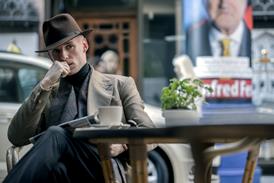





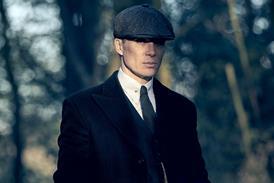
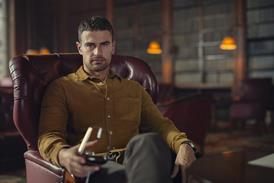


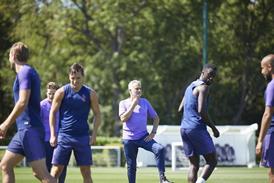



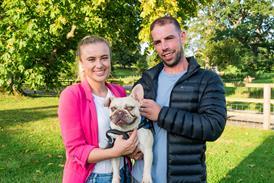












No comments yet